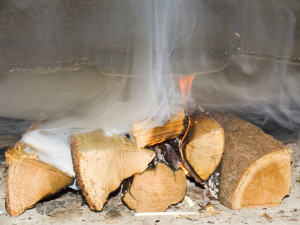Common Chimney Parts Replacement

Is your chimney not working the way it should? Perhaps a part or two needs to be replaced. Get an inspection now.
It may look simple from the outside, but your masonry chimney system is a lot more than a tall stack of bricks. And your prefabricated chimney system is a lot more than a long pipe.
Inside and out, a chimney system is a complex collection of parts designed to hold in combustion byproducts, encourage draft, protect against heat, protect against water intrusion or some combination of several of those. And like any complex collection of parts — from a car engine to a kitchen appliance — from time to time, a part will need replacing. That’s where Chief Chimney Services comes in.
Our CSIA-certified technicians have been serving homeowners in Suffolk County for decades — there isn’t a chimney repair we haven’t tackled a dozen times over, and we take pride providing our clients with the kind of top-notch care that comes with extensive training and extensive experience.
Whatever needs replacing in your system, we’re here to help. But if you’re curious about some of the more common chimney part replacement jobs we perform, here’s a quick rundown:
Chimney Caps
Chimney caps need to be made out of strong and durable material (stainless steel and copper are exceptional choices), and they need to be properly sized and installed to do their important job effectively. That job is multi-pronged: First, chimney caps help to keep moisture out of the chimney by closing off the top of the flue. Second, a strong, properly sized cap helps keep animals, including birds and many mammals, from moving into your chimney to nest, causing damage and a host of annoying problems. Beyond that, some specialized caps can help with performance issues, like downdrafts. If you have a damaged galvanized cap, or you’ve lost a chimney cap in a bad storm, our technicians can help you find the perfect replacement, and install it to last.
Chimney Flashing
Chimney flashing plays a hugely important role in your system, and its installation is meticulous work, custom-designed and -fitted for every individual chimney. It needs to be custom-installed to be effective — flashing is tightly fitted, in layers, around your chimney where it meets the roofline, to keep water from making its way into that seam. So the installation needs to be free of gaps and snug to be watertight and durable. Sometimes serious windstorms can tear pieces of flashing off, which makes replacement necessary. And when flashing is improperly installed to start off with, leaks and the need for replacement flashing generally follow.
Energy Top Chimney Dampers
Many older chimneys have what’s called a throat damper installed deep in the chimney, and it closes off the flue down above the firebox when you’re not having a fire. These use a metal plate to cover up the flue opening, and that doesn’t provide a particularly effective seal to start off with. Over time, those dampers can also corrode, crack, get stuck or the plate can get dislodged from the track that it sits on. Throat dampers can sometimes be repaired, but replacing that damper with an energy top damper– installed up at the top of the flue — can make a much better choice. These completely close off the flue with a silicone gasket, keeping air transference to a minimum and helping you save money and fuel by increasing your system’s energy efficiency.
Those are just a few of the more common replacement parts we install. Chief Chimney techs can handle any and all chimney repair or replacement jobs that you might need — just give us a call!



